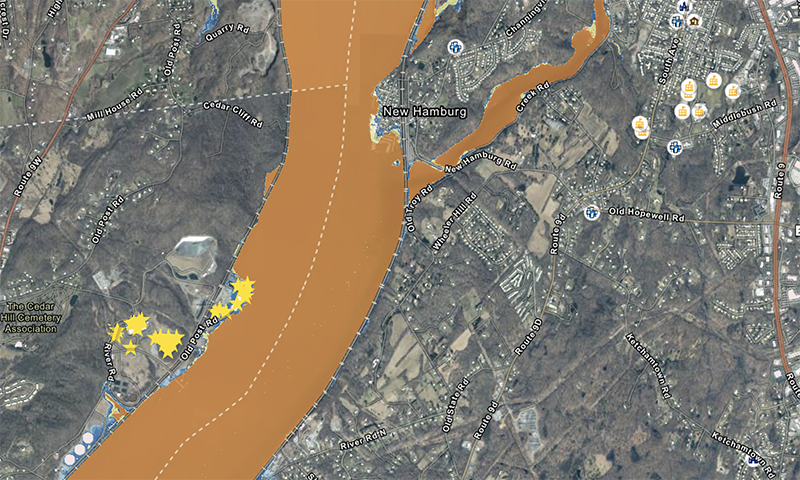New Mapper for New York State Expands Access to Flood Planning
An easy-to-use mapping tool increases flood planning capacity in New York State, especially for historically underrepresented communities, and can enhance planning for sea level rise. Developed by the NASA Socioeconomic Data and Applications Center (SEDAC) at Columbia Climate School’s CIESIN, the New York State Flood Impact Support System Application (NYS FIDSS) visualizes building footprint data for nearly all New York State’s infrastructure, except New York City. It is highly interactive and accessible, requiring only Internet access, ensuring that communities with fewer resources can create comprehensive flood scenarios for planning, response, and policymaking.
The easy interface of the NYS FIDSS mapper aligns with the aims of the new NASA Open Science initiative to more openly share software, data, and knowledge to advance inclusiveness and improve social justice. The Mapper includes a data set, U.S. Social Vulnerability Index Grids, developed by the NASA SEDAC and based on the Centers for Disease Control’s Social Vulnerability Index, which lets users visualize relative “social vulnerability” for areas impacted by flooding. The index displays fine-grained information on social conditions of the population in a particular area, including economic level, who is in the household, minority status, dwelling places, the ability to understand English, and access to transport. This information can be critical to targeting flood planning resources and aid to the areas that most need it—before, during, or after a flood event.
The NYS FIDSS mapper is based on results from the project New York State Building Footprints with Flood Analysis, which provides infrastructure data for all New York State counties excluding New York City. It also includes data on areas bordering the lower Hudson River Valley and Westchester's Long Island Sound shoreline, from the Hudson River Flood Impact Decision Support System, a flood assessment mapping tool developed by CIESIN under support from NYSERDA. The mapper also provides infrastructure, flooding, and socioeconomic data layers at the local level from the Consortium for Climate Risk in the Urban Northeast (CCRUN), whose members from academia, including CIESIN, conducted stakeholder-driven research to reduce climate vulnerability in the urban northeastern United States, supported by NOAA.
The lead developers are CIESIN senior research staff assistant Juan Martinez and senior systems analyst/GIS developer Kytt MacManus.
See: The New York State Flood Impact Support System Application (NYS FIDSS) Mapping Tool
